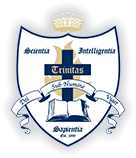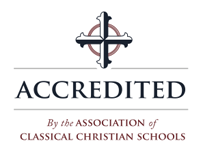 We’ve spent the last two weeks thinking about the dominant form of grades used in schools today, the history and effects of that system, and why they are not the ideal for a classical Christian school.
We’ve spent the last two weeks thinking about the dominant form of grades used in schools today, the history and effects of that system, and why they are not the ideal for a classical Christian school.
Bear with me one more time as I recall our pitching metaphor. A coach who tells a young pitcher that they threw a “C+” pitch is not providing much help. And the young pitcher who interrupts a coach’s instruction to ask, “Yeah, but did I pass?” might be riding the bench for a while. Why? Because we understand intuitively that constructive feedback is about more than a graded evaluation.
So, what does Trinitas propose to do about the situation? If the current system is less than ideal, what other method might replace it? Are Trinitas teachers the only ones who think grades are a hindrance to education? By no means! Other ACCS schools have been working on this change as well. The Veritas School in Virginia, the Geneva School in Orlando, and Westminster Academy in Tennessee have already adopted changes like those we are proposing and have employed them with great success for years.
What follows are the proposed changes, along with the accompanying rationale. These elements will help us to establish the right “landmarks” for our students, as aids to parents in the training up of righteous young men and women. These changes are less drastic than they seem, but they do emphasize the direction that the school has been going since my arrival in 2014. The Grammar School has been using the marks E–S–N–U for some courses, as has the Logic School. The proposed changes, which are modeled on Clark and Jain’s The Liberal Arts Tradition, take what Trinitas was already doing and employs it more broadly with slightly different terminology.
Teachers need to be able to focus on mastery rather than minutiae.
A student ought to be more concerned with the written feedback provided by a teacher, rather than calculating how many misspelled words equal an 85. The Mastery Approach eschews that kind of thinking and works with ranges. Rubrics keep the grades from becoming unduly subjective while also removing the need to tabulate an endless list of mistakes to justify a grade. Teachers and students both will find this liberating. Under this system, feedback becomes the dominant way a student understands their success. Additionally, parents are invited to consider the frame of their child in a way that works with the way God has equipped them. The Mastery Approach brings the “grade” back to its function: to evaluate a student as they progress to mastery.
“So why change it? Can’t we just say all of that and still use As and Bs?” Since we are aiming to redirect the student away from worldly measures and towards heavenly ones, this shift is more than a mere technicality. Trinitas makes it plain that “we aim to graduate young men and women who . . . recognize cultural influences as distinct from biblical [and] equipped with and understanding the tools of learning, desiring to grow in understanding, yet fully realizing the limitations and foolishness of the wisdom of this world.”
Trinitas already uses this model in some classes; it is time to employ it broadly.
While the E–S–N–U model is better suited to grades prior to 9th grade than the 10–point A through F model, students are acculturated to see the E as an A, the S as a B, etc. Taking the structure already in place and modifying it to embrace the language of the End of the Year Awards accomplishes two things. First, students are prompted to think about the meaning of those awards. If that language becomes part of our daily routine, then the ceremony at the end of the year will have more gravity as it better represents what the students hear day in and day out. It helps them to better measure their yearly success against their daily progress. This will continue giving Trinitas a common language, something that will mean the same thing to parents, students, and teachers. This will also reinforce the emphasis on Latin instruction, something that Trinitas values and connects us with the larger ACCS community who have adopted similar language in recent years. Second, students are motivated to think in terms of mastery and feedback. There is a need to do this in a way that grabs the attention of the student, who has been raised in a culture that only measures success by 100s. These marks are aimed at virtue rather than mechanical prowess.
In brief, these changes will mean deploying new markings: Magna Cum Laude (exceeding expectations; M), Cum Laude (working with diligence and virtue; C), Satis (satisfactory work indicating progress; S), and Non-Satis (work must be remediated for progression; N). These would be employed across all the grammar school grades (from Kindergarten to Sixth grade), applied selectively in Seventh and Eighth grade (in the enrichment classes), and only in Citizenship for the Ninth through Twelfth grades. “Why not employ this everywhere if it is a good thing?” For the high school student, grades mean something that goes beyond Trinitas. And so, Trinitas will continue adhering to the Numerical Scale system at this stage to facilitate the student’s transition into the educational arena that comes after high school.
“Again, are these changes necessary? Do we run the risk of being more ‘classical’ and less ‘christian’?” I’ve intentionally used the diminutive forms of these words to drive home my point. The changes I’m suggesting are both Classical and Christian. By shifting to terms of praise rather than empirical terms, Trinitas is exercising charity and grace through the employment of the language of the past. If we want our students to love learning, then we must help them think of the learning process as opposed to only its numerical calculation at the end of their time at Trinitas. Our Mission & Vision Statement claims as much, hoping to mold our students that we will “find them well-prepared in all situations, possessing both information and the knowledge of how to use it” as well as fulfilling our “desire [that] they be socially graceful and spiritually gracious.”
Will every student leave us prepared to pitch a fastball? Maybe not. But they will be given all that we can offer to help them know and serve their God. And I imagine that exceeds any possible “A” they might receive.


